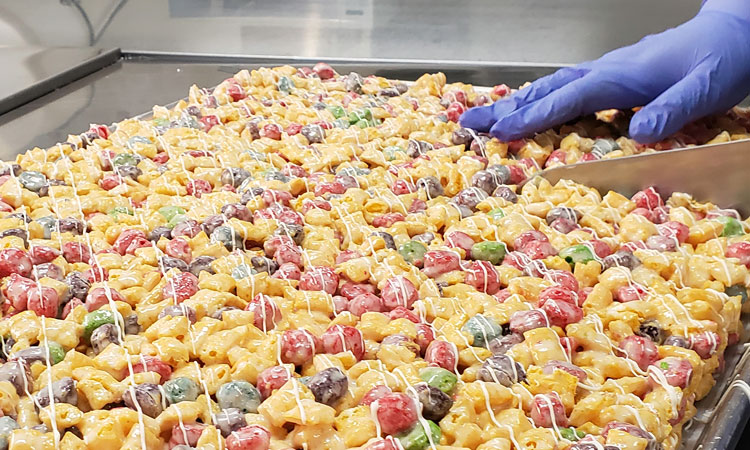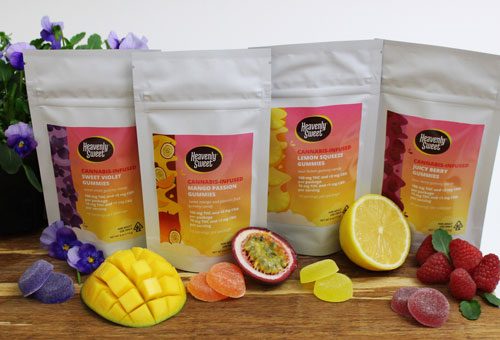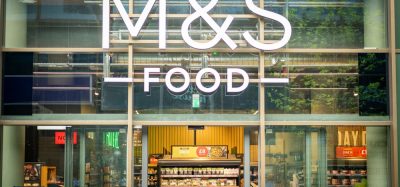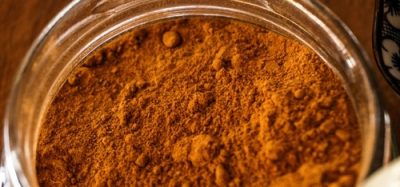Resolute and ready for the next hurdle
Posted: 20 November 2020 | Bethan Grylls (New Food) | No comments yet
New Food interviews cannabis confectioner, Sheila Dedenbach, about her journey to success, her popular cannabutter, regulations, and the future of edibles.


Looking to learn more about edibles, confectioner, Sheila Dedenbach, visited her first dispensary in 2008; it was a time when the cannabis industry was still very much in its infancy and unrecognisable from the sector we know today.
“I was greeted with rows of puff rice treats varying in size with no label to be seen,” Dedenbach recalled. Perturbed by the lack of transparency and guidance, she decided to start her own cannabis venture; today’s now successful ‘Heavenly Sweet’.
Made with cannabutter
Dedenbach started to experiment with the crude oil and trims (cannabis leaves) in the kitchen and eventually perfected a recipe for cannabutter (cannabis butter). From there, she sought out a lab to test her butter – something that was rather unheard of at the time.
Looking to learn more about edibles, confectioner, Sheila Dedenbach, visited her first dispensary in 2008; it was a time when the cannabis industry was still very much in its infancy and unrecognisable from the sector we know today.
“I was greeted with rows of puff rice treats varying in size with no label to be seen,” Dedenbach recalled. Perturbed by the lack of transparency and guidance, she decided to start her own cannabis venture; today’s now successful ‘Heavenly Sweet’.
Made with cannabutter
Dedenbach started to experiment with the crude oil and trims (cannabis leaves) in the kitchen and eventually perfected a recipe for cannabutter (cannabis butter). From there, she sought out a lab to test her butter – something that was rather unheard of at the time.
“There were no industry standards for dosing medicated cannabis edibles then,” Dedenbach said. “We were the first edible companies in the state to begin lab testing way before it was required.”
Wishing to empower her customers, she made sure that all her products were properly labelled 

Since Heavenly Sweet’s humble inception, Dedenbach’s cannabutter has come a long way. No longer cooking with trim in her kitchen, the confectioner now infuses her butter with refined distillate derived from sativa‐dominant hybrid cannabis. This butter is available to purchase and is used in all of the company’s edibles.
“We use category II and III distillate, which essentially means it has been processed a number of times until it reaches a syrup‐like texture. It is honey coloured in appearance, has a very consistent potency and is odourless; it looks and smells very like traditional butter.
“When you are infusing butter with distillate, you have to ensure everything is in liquid form and is at the same temperature before mixing. It is a process that requires homogeneity to ensure the mixture stays combined.
“Heating must be done slowly and at a low temperature, as direct and/or intense heat can vaporise some or all of the potency,” she continued. “You have to accommodate the fragile cannabinoids.”
As Dedenbach knows how much cannabinoid is in the distillate (achieved through testing) she uses, she is aware of what adjustments to make to her butter recipe. These tweaks are necessary, as some ingredients, such as chocolate chips and nuts, can react with the THC and affect the edible’s levels. The company works to a narrow target of 10 percent THC variation, which is verified in the lab via a sample. This sample is just a portion of a single treat, which is tested for content levels, as well as pesticides, etc. The sample will then be multiplied to its appropriate number of units for the entire weight of the product.
This due diligence means Heavenly Sweet is able to obtain a specific yield at the end, per ounce and gram of cannabutter.
Regulation
Track and trace
According to Dedenbach, making the butter is the easy part. “The challenge is keeping track of everything,” she said. In line with California law, all commercial cannabis has to be tracked via the California Cannabis Track‐and‐Trace (CCTT) system. The state’s contracted service provider for the CCTT system is Franwell, Inc., which employs a software programme known as ‘Metrc’.
Essentially, this records all commercial cannabis activity and movement across the distribution chain. The system uses a unique identifier associated with an RFID tag to track products in real‐time as it is grown and delivered for sale.
“The Bureau of Cannabis Control [essentially the cannabis police] can access this system and whenever they come in for spot inspections use it to ensure everything matches up.”
How to identify a legal product
Dedenbach said that the market has seen recent consolidation since new regulations have been introduced. “Some manufacturers didn’t have the capability to become compliant, so lots of cannabis companies have gone into the ‘black market’.”
In fact, 80 percent of all cannabis in California is sold this way, according to a report from New Frontier Data. “It makes it difficult for us legitimate businesses to compete as they can offer products at a lower cost due to tax avoidance.”
Obviously, the regulations have been introduced to protect consumers, so buying from a licensed dispensary or delivery company is very important. “Consumers will be able to identify a legal product via the batch number on the package,” she explained. “That number will correspond to the product’s certificate of analysis, which is required by law.”
Packaging rules
There are several packaging regulations that manufacturers must adhere to. “Firstly, the product must state that it is cannabis infused,” said Dedenbach. “That must be positioned above the name of the product itself in an equal or larger font size. You also cannot have any cartoons featured on the product, as this may appeal to children. The package must also be child resistant.
“A dose is 10mg [in California] and this must be stipulated on the label. If the product contains more than one dose, it needs to either have a cutting guide or be pre‐segmented so that the user can easily identify a single dose.”
The future
Heavenly Sweet offers a range of different edibles, including caramel corn, crackers, cookies, chocolate bars and classic sweet treats like rocky road. In terms of inspiration, Dedenbach said she looks to current, generic snack food trends. “We might be using cannabis, but we’re still a snack company.
“When innovating, we begin by playing around with different mixtures and then devise ways to apply it to our product. We create both non and medicated versions [differentiated by the dosage allowed] and use a control group for feedback. Once we have settled on a flavour profile, we start looking at the bigger picture, including the time it takes to affect the user, the quality of that effect, and the packaging design.”
The length of time it takes for the product “to take effect” is the company’s current focus and, according to Dedenbach, the next big trend. “Why wait an hour when you can have the effect in minutes?” she pointed out.
“Using microencapsulation nanotechnology, we are developing super quick‐acting gummy products, which we’ll be launching shortly in four flavours.” This technology is said to enable the THC to bypass the stomach and reach the small intestine quicker, allowing for more THC to enter the bloodstream and an effect to occur within minutes.
Why wait an hour when you can have the effect in minutes?
“Cannabis edibles will continue to thrive,” Dedenbach added. “Not only are consumers turning to more discreet ways of consuming, but the negative media around vapes has made people cautious; they’re looking for an alternative.”
Dedenbach is referring to the recent US vape crisis,2 whereby untested black market vapes were linked to several hospitalisations. “This really scared people and as a result, made edibles seem much more approachable.”
Whether or not edibles will be the new go‐to over more traditional methods of consumption remains to be seen, but a report from Zion Research echoes Dedenbach’s positive forecast, with an anticipated compound annual growth rate of 25.4 percent between 2019 and 2025.
By the sounds of it, cannabis’ future is looking very sweet indeed. However, there will be more obstacles to overcome as the market consolidates further. As Heavenly Sweet’s Founder has demonstrated, survival requires hard work, innovation and flexibility.


Sheila is the Founder and President of SD Pantry Inc and Heavenly Sweet. She has a degree in Business Communications and has owned several businesses, including a non-medicated confectionery company. She brought the skills developed in those businesses to her latest venture, Heavenly Sweet.
References
- www.newfrontierdata.com/cannabis‐insights/40‐ projected‐leave‐black‐market‐2020/
- www.cdc.gov/tobacco/basic_information/e‐ cigarettes/severe‐lung‐disease.html
- www.globenewswire.com/news‐ release/2019/02/14/1725264/0/en/ Global‐Cannabis‐Edibles‐Market‐Will‐ Reach‐Over‐USD‐11‐564‐Million‐By‐2025‐Zion‐ Market‐Research.html
Issue
Related topics
Flavours & colours, Food Safety, Ingredients, New product development (NPD), Product Development, Quality analysis & quality control (QA/QC), Regulation & Legislation









